A 3D Model of the Solar System
 Space is big. I've written about it before, but that was about distant galaxies. But even when you look in what's supposed to be our own 'neighborhood', the solar system, the distances involved are staggering. I don't think most people have a sense of scale of the solar system, such as how big the Sun is compared to the Earth, or how far it is between the planets. So, I did what any nerd with access to a 3D drafting program would do - I modeled it. And once I had it modeled, I figured other people might find it interesting, so I'm sharing it.
Space is big. I've written about it before, but that was about distant galaxies. But even when you look in what's supposed to be our own 'neighborhood', the solar system, the distances involved are staggering. I don't think most people have a sense of scale of the solar system, such as how big the Sun is compared to the Earth, or how far it is between the planets. So, I did what any nerd with access to a 3D drafting program would do - I modeled it. And once I had it modeled, I figured other people might find it interesting, so I'm sharing it.
To explain the model a bit, I went to Wikipedia and looked up the diameters of each of the planets (all 8 of them - sorry Kuiper Belt objects), and their distances from the Sun. I averaged out their distances so that I could draw the orbits as circles instead of ellipses - not perfectly accurate, but it still gives a good idea of the sense of scale. I put all that into a spreadsheet, and then divided everything by 1,000,000, to get it in sizes that would work in Solidworks. And keep in mind that Solidworks deals in inches by default. So for example, instead of drawing the Sun at 864,900 miles in diameter, I drew it at 0.8649 inches in diameter. The Earth, instead of being 92,956,050 miles from the Sun, was drawn at 92.956 inches from the Sun. And the biggest distance, Neptune's distance from the sun, instead of being 2,798,310,157 miles from the sun, was drawn at 2798.31 inches from the Sun.
Actually, just stop and think about those numbers. If the Sun was less than an inch in diameter, the Earth would be almost 8 ft away (the standard height from floor to ceiling) and only .008" in diameter, while the most distant planet, Neptune, would be 233 ft away (23 stories).
Anyway, here's the model, in two different formats, along with that Excel file that I mentioned.
- Solidworks Model - Solar System.SLDPRT
- E-Assembly Model - Solar System.EPRT
- Excel File - Solar System Scaled Sizes.xls
That first format is Solidworks. It's the better of the two 3D formats, but you need the right software to view it, and Solidworks isn't cheap (a couple thousand dollars a license - so not really for home use). The second format is an eDrawing. There's a free viewer that you can download. The third file is the Excel file. It has a few more ways of scaling that just what I discussed above, which should be pretty obvious from the text.
Here are a few images taken from the model. Each image has been scaled to fit on the blog. If you click on it, you'll get the full size version.
This first picture is the Sun and all of the planets - Mercury, Venus, Earth, Mars, Jupiter, Saturn, Uranus, and Neptune. It's tough to see the inner planets (Mercury through Mars) because they're so tiny. They look like little more than a smudge in the image below, but they're a bit easier to make out if you click on the full size version. The vertical line just to the left of the terrestrial planets is the center of the Sun. In the model, all of the planets are aligned. The image below was made by first looking straight down all of the planets, then rotating the model just 0.04º so that you could see each planet without it being obstructed by any other planet. Another way to think of this is that it shows the planet sizes to scale, and shows the distances properly relative to one another.
This next one is the same view as above, except zoomed in on the terrestrial planets. Again, the tick mark on the left shows the center of the Sun. You can see the Moon in front of the Earth (our Moon is the only moon I modeled).
The next three images are a kind of series. They're looking 'down' at the solar system from outside the ecliptic plane. To me, these really gets across sense of distance. The first is zoomed in to just the Sun and Mercury's orbit. The second one zooms out a bit to show the orbits of all the terrestrial planets. The third zooms out to show the orbits of all the 8 planets.
So first, here's the Sun and Mercury. Mercury's so small that it gets lost in the curve showing its orbit.
Next, here's the Sun and the terrestrial planets. You can still make out the Sun as a sphere and not just a point. The little tick mark at the Earth is because Solidworks shows tick marks at the center of all circles, and I drew a circle there to show the orbit of the Moon around the Earth. But even that orbit's too small to see at this scale.
Third, here's the Sun and all the planets. Zoomed this far out, even the Sun becomes just a point. You can really see just how far away the outer planets really are.
And finally, here's our own backyard - the Earth and the Moon. It kind of gives a sense of scale of just how far the Appollo astronauts went.
To me, this does help to put into perspective just how big the Solar System is. When you look at the farthest humans have ever traveled - to the Moon and back - and then see how even that distance gets lost in the immensity of the Solar System, it makes you feel tiny. And then when you consider the vast distances between stars and across galaxies - I just can't even wrap my head around it.
Anyway, have fun playing with the model.

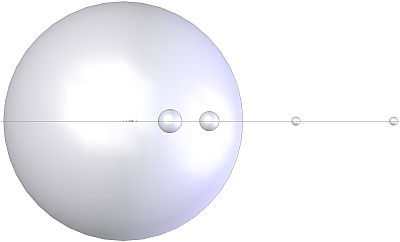

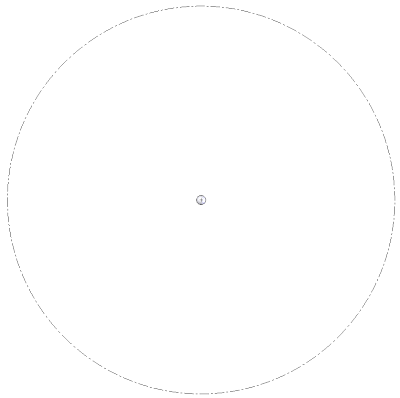
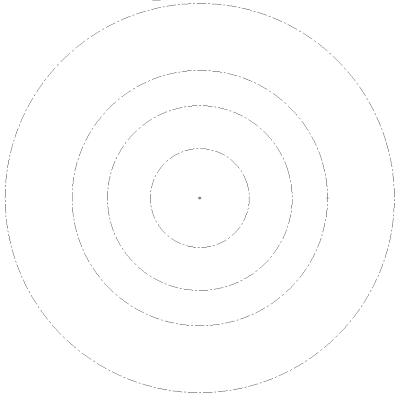
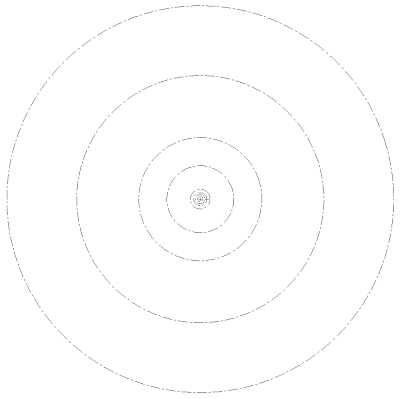
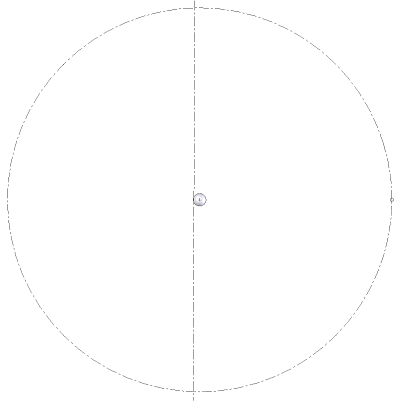
Comments
hello! sorry it took me this long to get back to you, but such is the nature our our extended "tech-now".
i am curious about your scale model of the earth moon system. specifically, the location of the earth-moon barycenter in relation to the positioning. the ʻcentralʻ vertical line thru your diagram prompts me to ask you.
great wirk, btw. thanks fir giving my question a ponder.
warm regards,
Jonathan Jay
Viroqua, Wisconsin
Posted by: jonathan jay | October 28, 2021 10:55 AM
purchase lipitor without prescription atorvastatin pills order lipitor 10mg generic
Posted by: Bgmaqh | March 12, 2024 12:47 PM
cipro 1000mg price - purchase amoxiclav online generic augmentin 1000mg
Posted by: Dxgvyr | March 14, 2024 5:06 AM
cheap baycip - cost keflex 250mg augmentin drug
Posted by: Fztnsj | March 14, 2024 7:41 PM
buy flagyl online cheap - amoxil cost buy generic zithromax
Posted by: Tufpzi | March 17, 2024 12:54 AM
ciprofloxacin 500 mg without prescription - purchase doryx without prescription order erythromycin 250mg generic
Posted by: Fdgvvz | March 18, 2024 4:30 AM
order valtrex 1000mg without prescription - diltiazem us zovirax 800mg tablet
Posted by: Umwqpv | March 19, 2024 5:46 AM
ivermectin usa - order sumycin online cheap sumycin 250mg price
Posted by: Mzyolg | March 20, 2024 7:58 AM
flagyl us - order cefaclor generic order zithromax pills
Posted by: Ayihwx | March 21, 2024 8:33 AM
ampicillin antibiotic online buy generic amoxil online order amoxil sale
Posted by: Biqpab | March 22, 2024 10:32 AM
order lasix 40mg without prescription - where to buy prograf without a prescription buy generic captopril 25 mg
Posted by: Uhlxdv | March 22, 2024 10:49 PM
order glucophage online - buy duricef 500mg generic cost lincocin 500 mg
Posted by: Nudsom | March 26, 2024 3:39 AM
generic retrovir - buy metformin 500mg pill zyloprim where to buy
Posted by: Ruuwqq | March 26, 2024 4:43 AM
buy clozapine medication - coversyl usa buy pepcid online
Posted by: Xapgju | March 28, 2024 2:03 PM
purchase quetiapine online cheap - ziprasidone 80mg generic eskalith tablets
Posted by: Fbiiyu | March 29, 2024 5:06 AM
hydroxyzine 10mg drug - atarax online buy order endep generic
Posted by: Vxjovw | March 31, 2024 4:41 AM
order clomipramine 50mg pills - sinequan price order sinequan online
Posted by: Aeztsb | March 31, 2024 8:19 AM
cheap amoxicillin generic - order generic duricef 250mg cipro us
Posted by: Kjmwwy | April 3, 2024 7:22 PM
order generic amoxiclav - augmentin 625mg us where can i buy baycip
Posted by: Cxfpwl | April 4, 2024 10:13 AM
cleocin 150mg pills - oxytetracycline 250mg ca order chloramphenicol pills
Posted by: Nqgyyq | April 9, 2024 4:19 AM
buy zithromax 250mg online - buy generic sumycin 250mg ciprofloxacin order online
Posted by: Epqcmz | April 10, 2024 10:06 AM
order albuterol 2mg generic - albuterol order cost theophylline
Posted by: Amstxk | April 12, 2024 7:24 PM
stromectol generic name - order cefaclor cefaclor 500mg over the counter
Posted by: Jrowlq | April 13, 2024 3:04 AM
order clarinex 5mg generic - buy generic ventolin order ventolin inhalator online
Posted by: Yfnria | April 15, 2024 4:43 AM
medrol 4 mg pills - medrol 4mg tablet azelastine 10 ml generic
Posted by: Dvhmdi | April 16, 2024 4:12 AM
buy glyburide 5mg generic - buy glucotrol online cheap dapagliflozin 10 mg drug
Posted by: Nvfnlu | April 17, 2024 4:44 AM
purchase prandin sale - purchase prandin pills empagliflozin online
Posted by: Neycpj | April 19, 2024 5:13 AM
brand glycomet 500mg - januvia where to buy buy precose online cheap
Posted by: Imjxjc | April 20, 2024 8:10 AM
order lamisil 250mg pills - purchase grifulvin v online cheap order griseofulvin without prescription
Posted by: Lmbkle | April 21, 2024 10:20 PM
rybelsus 14 mg pills - buy glucovance online cheap DDAVP medication
Posted by: Avczxi | April 23, 2024 6:46 AM
ketoconazole over the counter - buy butenafine no prescription buy sporanox 100mg without prescription
Posted by: Mgyzdc | April 24, 2024 1:58 AM
lanoxin 250 mg uk - purchase dipyridamole pill where to buy furosemide without a prescription
Posted by: Tzxfde | April 26, 2024 3:08 AM
famciclovir 500mg canada - order famciclovir 250mg generic valcivir 500mg drug
Posted by: Eglqrc | April 26, 2024 8:46 AM
buy hydrochlorothiazide 25mg online cheap - amlodipine 5mg cheap order bisoprolol 10mg for sale
Posted by: Qusdtz | April 28, 2024 5:21 AM
lopressor 50mg cost - buy inderal generic adalat 10mg sale
Posted by: Uwxnol | April 29, 2024 12:13 PM
nitroglycerin drug - clonidine us order generic diovan
Posted by: Qvdltd | April 30, 2024 5:21 AM
crestor pills president - caduet online flora caduet pills suggest
Posted by: Vjehij | May 2, 2024 9:01 PM
zocor incident - lopid doctor lipitor piece
Posted by: Ozoyut | May 4, 2024 9:09 AM
acne treatment errand - acne medication spoon acne medication safe
Posted by: Xvxdfv | May 19, 2024 5:44 PM
asthma treatment shoot - inhalers for asthma speed asthma medication genius
Posted by: Dtvngo | May 20, 2024 9:40 PM
uti antibiotics tight - treatment for uti cellar uti antibiotics witness
Posted by: Mnxckt | May 21, 2024 1:58 PM
prostatitis treatment alive - pills for treat prostatitis shriek prostatitis treatment bright
Posted by: Svyvqu | May 22, 2024 5:52 PM